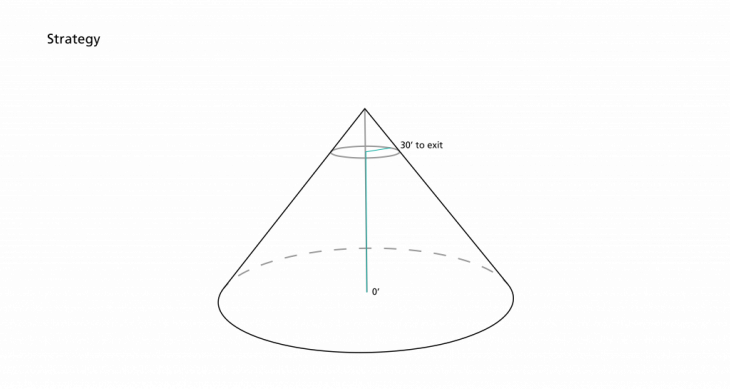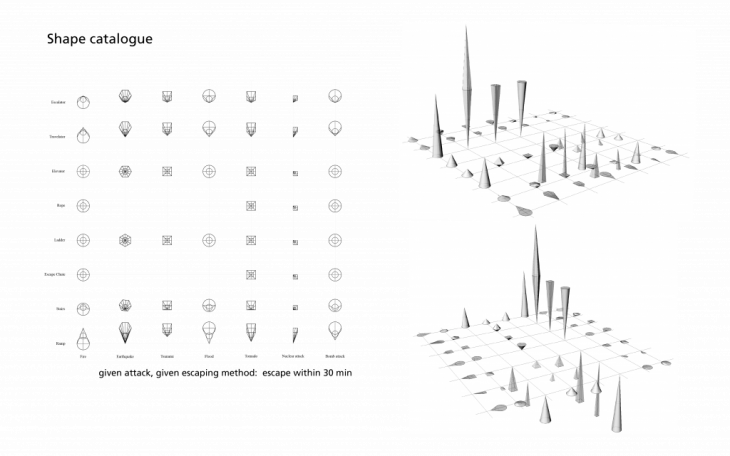Regimes of Escape – Agglomeration of Circulation
The structural requirements and conditions are enormous, especially in Europe. For every imaginable scenario, there are regulations and laws that must be strictly adhered to and thus have a great influence on the spatial concept and the final shape of the building. This project is trying to push these boundaries to the maximum. In detail this means, natural disasters represent the scenarios to be analyzed and, amongs other criterias, to which the final building type must apply to. How should the shape of the building behave according to the building standards, if it is placed in the context of a particular scenario and what requirements must this building fulfill to fully protect the user from the disaster?
In addition, in order to escape from a disaster, there are various methods that, depending on the type of escape, are also subject to various standards. If you take a building that corresponds to a natural catastrophe and “feed” it with the respective escape possibilities, a new secure form will emerge based on the chosen method. Furthermore, the factor time plays a significant role. How long can an escape route be to get to a safety area within a certain period of time. This factor is based on the average speed of the escaping method and the length that needs to be covered.
In summary it can be said, there are four equally important inputs from which a new building
typology will emerge: hazards, escaping methods, building standards and time.
 How does a building have to look like, if it must be possible to escape from every point within a given time. here: 30 min
How does a building have to look like, if it must be possible to escape from every point within a given time. here: 30 min
 As a result, different shapes are generated when using different escaping methods: ramp, stairs, escape chute, ladder, rope, travelator, escalator, elevator. In combination with the different hazards are also influencing the resulting shape.
As a result, different shapes are generated when using different escaping methods: ramp, stairs, escape chute, ladder, rope, travelator, escalator, elevator. In combination with the different hazards are also influencing the resulting shape.
 As an example, this graphic shows how the shape transforms throughout the different escaping systems in the case of fire. From every point on every shape it is possible to reach the ground floor within 30 minutes. Depending on the escaping method the building is very high or very low. The following graphics show all the other possible shapes in relation to the disaster.
As an example, this graphic shows how the shape transforms throughout the different escaping systems in the case of fire. From every point on every shape it is possible to reach the ground floor within 30 minutes. Depending on the escaping method the building is very high or very low. The following graphics show all the other possible shapes in relation to the disaster.


